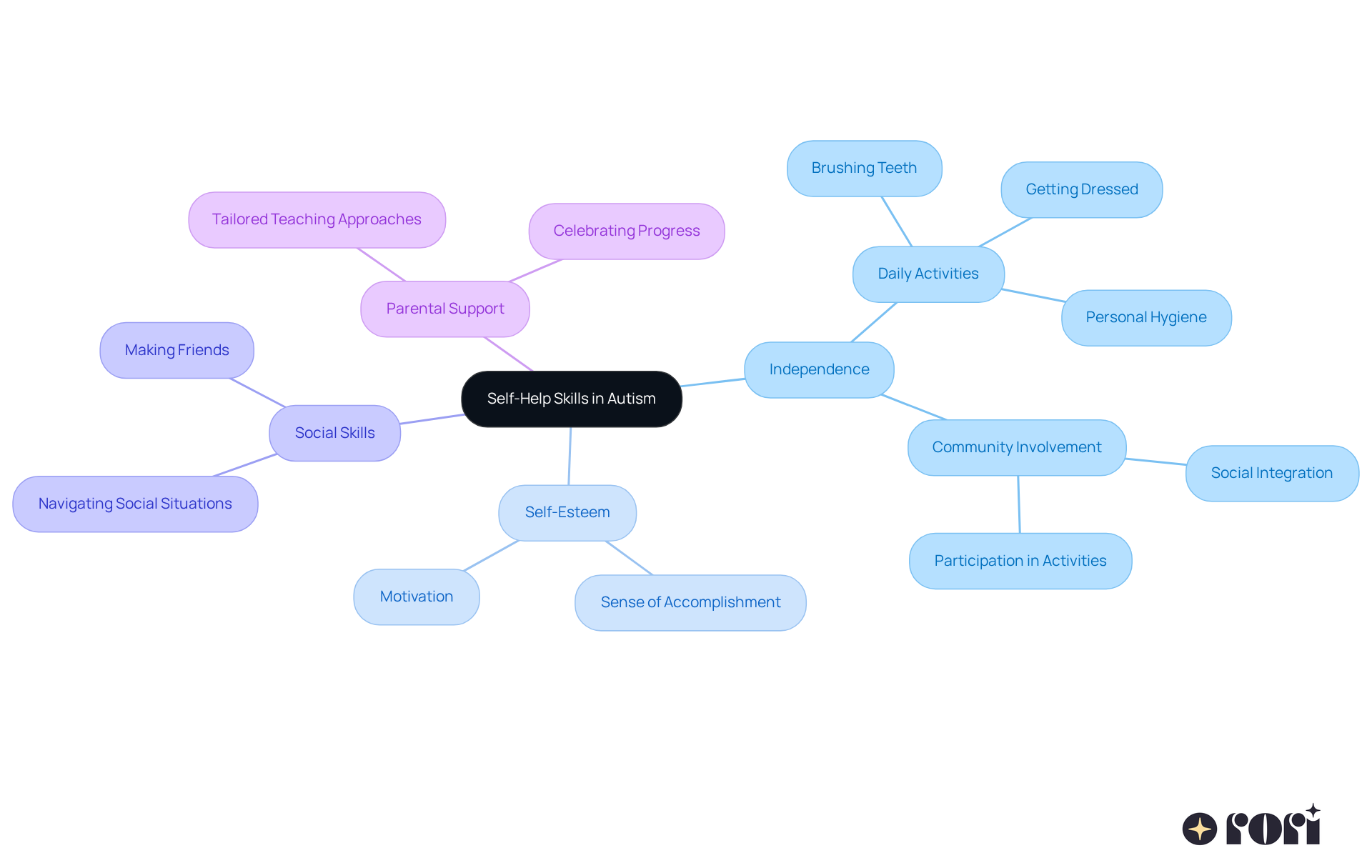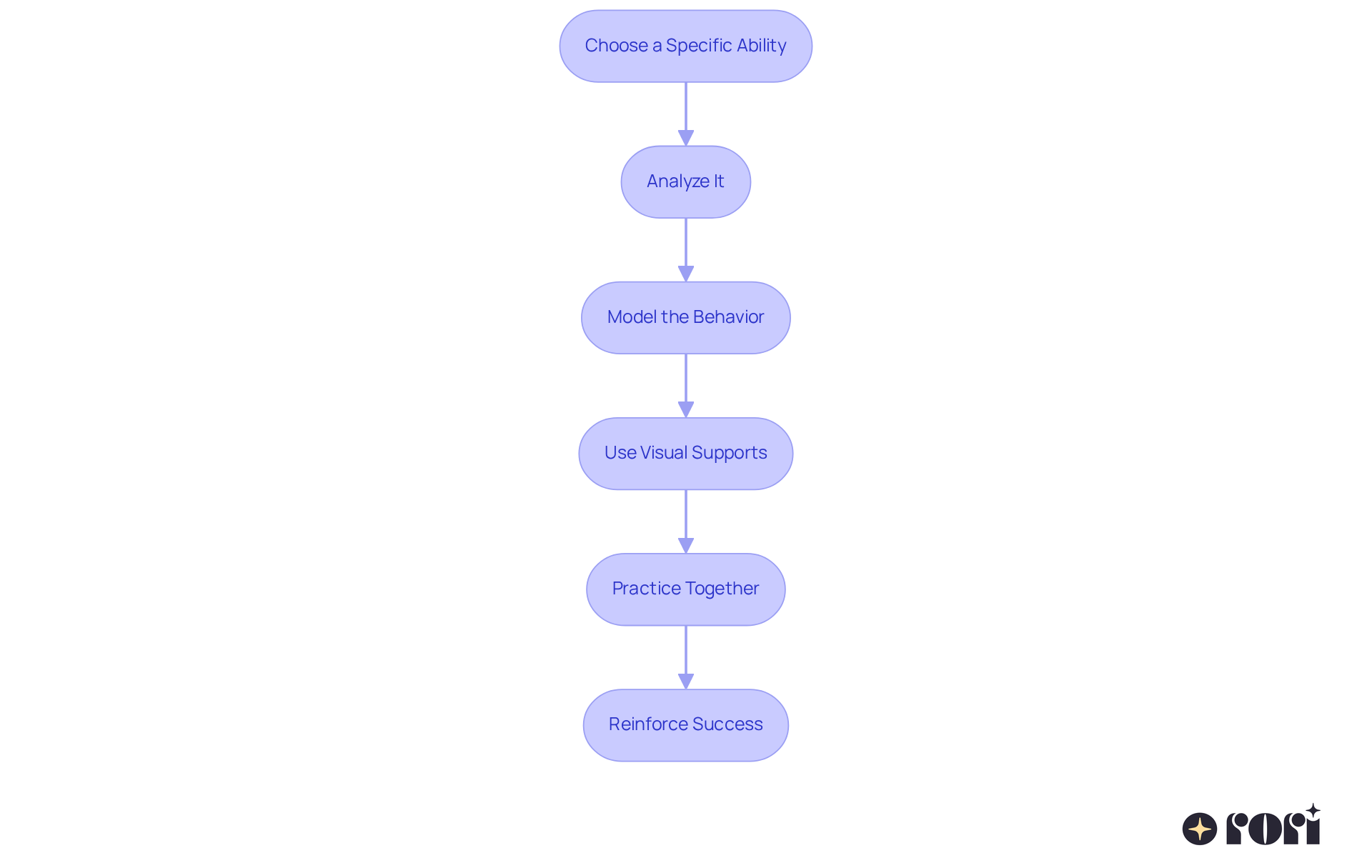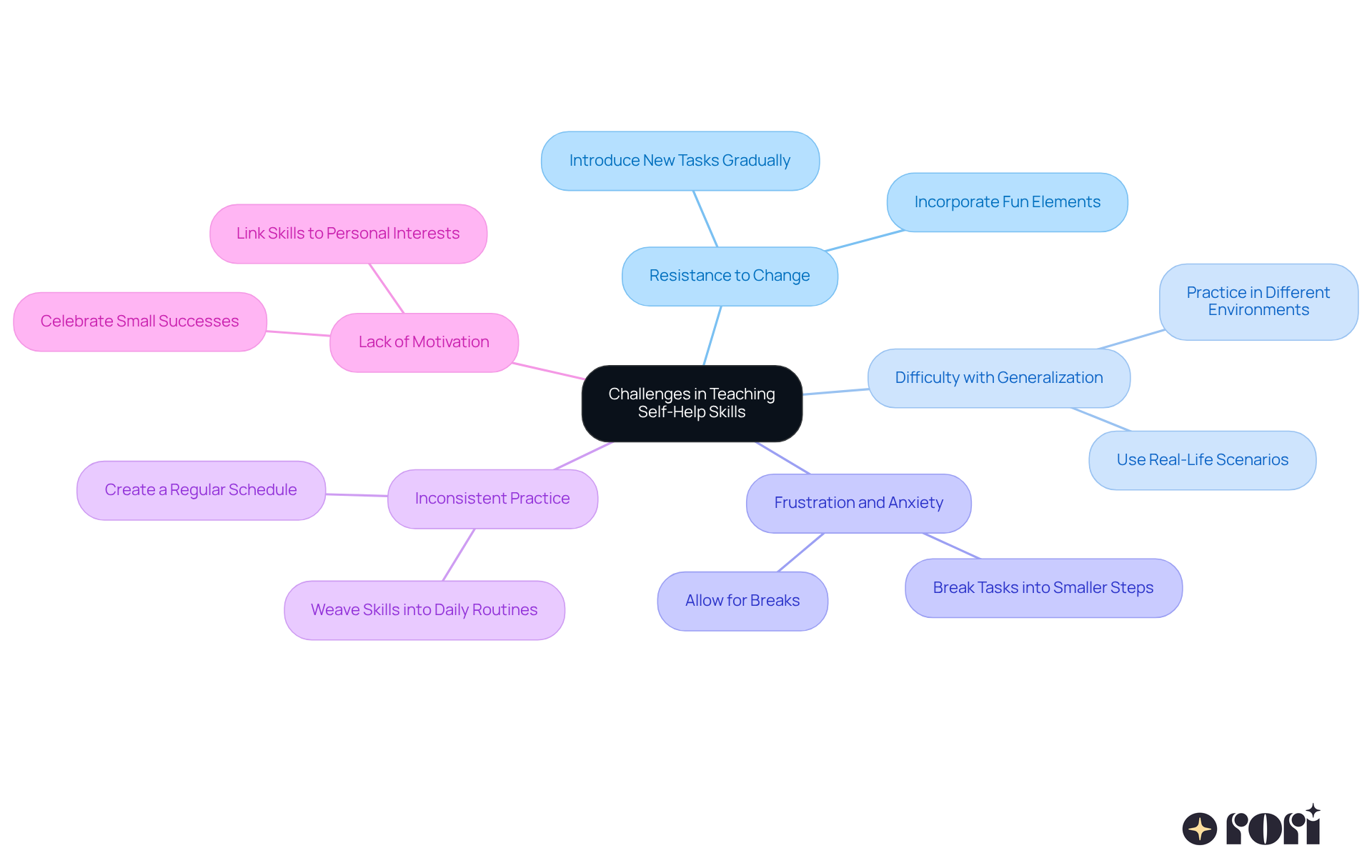Understanding autism can feel like a journey filled with unique challenges and rewarding milestones. For many parents, a big part of this journey is helping their children develop self-help skills. These skills are so important for fostering independence and confidence in kids with autism.
As you navigate this complex landscape, you might find yourself wondering: how can you effectively teach these essential skills to your child? You’re not alone in this! Many parents share similar questions and experiences.
In this article, we’ll explore practical strategies and insights that can empower you to enhance your child's ability to manage daily activities. Together, we can help them embrace a more independent life. Let’s dive in!
Self-care skills are so important for kids with autism, and they really shape how well they can handle daily activities on their own. Think about the basics: brushing teeth, getting dressed, and keeping clean. When kids master autism and self-help skills, it not only boosts their independence but also builds their self-esteem and confidence.
Research shows that young people who develop strong self-care abilities are better at navigating social situations and making friends, which leads to a happier life overall. For instance, kids who learn to take care of themselves often feel a sense of accomplishment that spills over into other areas, making them more confident in different settings.
By recognizing how crucial these skills are, parents can tailor their teaching to ensure their children have the right tools for a successful and independent future. Celebrating every little victory, no matter how small, keeps motivation high and encourages ongoing progress. This ultimately opens up more opportunities for independence and community involvement. Let’s explore this together!

Teaching autism and self-help skills to children can feel like a big task, but it doesn’t have to be! Here are some friendly steps to guide you along the way:
By following these steps, you’re not just teaching skills; you’re helping your child with autism and self-help skills to gain independence and feel good about themselves. Let’s explore this together! We’re here to help you every step of the way!

To help your child develop self-help skills, here are some friendly tools and techniques you can try:
Visual Aids: Think about using picture cards, charts, or even videos to give clear visual instructions. Research shows that visual aids can really boost understanding and engagement for kids with autism and self-help skills, making those tricky tasks a bit easier. Plus, they can help reduce anxiety and improve communication, leading to better social interactions.
Task Analysis: Break down complex tasks into smaller, manageable steps. This way, your child can focus on mastering one part at a time, which builds their independence and confidence. Task analysis is super important for teaching skills effectively and aligns perfectly with the personalized planning needed for behavioral programs.
Social Stories: Create simple stories that highlight the importance of self-help skills and how to use them. These narratives help kids grasp the context and purpose behind what they’re learning, fostering emotional regulation and understanding. Dr. Temple Grandin once said, 'Different, not less,' reminding us to celebrate the unique strengths of our children with autism.
Routine Establishment: Try to weave self-help techniques into your daily routines. Consistency is key! It helps kids internalize these skills, making them part of their everyday life and easing any anxiety around transitions. Visual supports can clarify routines and reinforce rules, making behavior management smoother.
Positive Reinforcement: Don’t forget to celebrate your child’s successes! Using rewards and praise when they complete a task not only motivates them to keep practicing but also boosts their self-efficacy. Studies show that positive reinforcement is effective in ABA therapy, helping to increase independence and reduce challenging behaviors.
By embracing these strategies, you can create a nurturing environment that enhances your child’s ability to learn and master essential independence skills, especially in the context of autism and self-help skills. Plus, when you equip yourself with ABA principles and strategies through education, you’re setting the stage for better behavioral outcomes and informed decision-making. We’re here to help you every step of the way!

Teaching young individuals with autism and self-help skills to be self-sufficient can come with its own set of challenges. But don’t worry! Here are some friendly strategies to help you navigate these common hurdles:
By using these strategies, you can effectively support your child with autism and self-help skills in overcoming resistance and mastering those essential skills. Let’s explore this journey together! We’re here to help you every step of the way!

Mastering self-help skills is truly a transformative journey for children with autism, opening doors to greater independence and self-confidence. By focusing on these essential abilities, parents can really boost their children's ability to navigate daily activities and social interactions. Developing self-care skills not only nurtures autonomy but also fosters a sense of accomplishment that resonates in many areas of life.
In this guide, we’ve laid out practical steps and effective strategies to help parents teach self-help skills. Think about breaking tasks into manageable steps or using visual aids and positive reinforcement—these methods create a supportive learning environment. Plus, by addressing common challenges like resistance to change and difficulty with generalization, we can help children adapt and thrive in different settings.
Ultimately, teaching self-help skills to children with autism is about more than just sharing knowledge; it’s about empowering them to embrace their unique strengths and capabilities. By investing time and effort into this crucial aspect of development, parents can help their children unlock a future filled with independence, confidence, and meaningful connections. So, let’s take these steps today for a brighter tomorrow, fostering a more inclusive and supportive community for everyone. We’re here to help you every step of the way!
Why are self-help skills important for kids with autism?
Self-help skills are crucial for kids with autism as they significantly shape their ability to handle daily activities independently, boosting their self-esteem and confidence.
What are some examples of self-care skills for children with autism?
Examples of self-care skills include brushing teeth, getting dressed, and maintaining personal hygiene.
How do strong self-care abilities affect social interactions for young people with autism?
Young people who develop strong self-care abilities tend to navigate social situations better and make friends more easily, leading to a happier life overall.
What impact does mastering self-help skills have on a child's confidence?
Mastering self-help skills gives children a sense of accomplishment that enhances their confidence in various settings.
How can parents support their children in developing self-help skills?
Parents can tailor their teaching to ensure their children have the right tools for success, celebrating every little victory to maintain motivation and encourage ongoing progress.
What are the long-term benefits of teaching self-help skills to children with autism?
Teaching self-help skills opens up more opportunities for independence and community involvement, contributing to a successful and independent future.